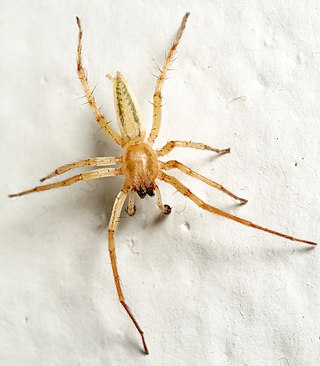
Anyphaenidae is a family of araneomorph spiders, sometimes called anyphaenid sac spiders or ghost spiders. They are distinguished from the sac spiders of the family Clubionidae and other spiders by having the abdominal spiracle placed one third to one half of the way anterior to the spinnerets toward the epigastric furrow on the underside of the abdomen. In most spiders the spiracle is just anterior to the spinnerets.
Trachelostenus is a genus of darkling beetles in the family Tenebrionidae. It is native to the Valdivian forests of Chile, and has at least two species, T. inaequalis (Solier) and T. fascicularis (Philipp). It was historically considered the only member of the family Trachelostenidae, but a 2015 study sunk the genus into the tenebrionid subfamily Tenebrioninae.

Acupalpus is a genus of insect-eating beetle species. Its representatives are found across Europe, Asia, and North America.
Trigonogenium is a genus of beetles in the family Buprestidae, the jewel beetles. Species are native to Chile and Argentina.

Ceroglossus is a genus in the beetle family Carabidae. There are about 10 described species in Ceroglossus, found in South America.
Plagiotelum is a genus in the ground beetle family Carabidae. There are at least two described species in Plagiotelum.
Nemaglossa is a genus in the ground beetle family Carabidae. This genus has a single species, Nemaglossa brevis. It is found in Chile.
Vianasia is a genus of beetles in the family Carabidae, containing the following species:
Mimodromius is a genus in the beetle family Carabidae. There are more than 40 described species in Mimodromius, found in South America.
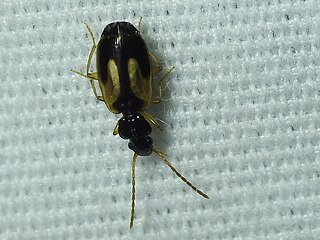
Axinopalpus is a genus in the beetle family Carabidae, found in North, Central, and South America. There are about 15 described species in Axinopalpus.
Eutogeneius is a genus in the ground beetle family Carabidae. This genus has a single species, Eutogeneius fuscus. It is found in Chile.
Monolobus is a genus of ground beetles in the family Carabidae. There are at least two described species in Monolobus.
Incagonum is a genus of ground beetles in the family Carabidae. There are more than 20 described species in Incagonum, found in South America.
Tropopterus is a genus in the beetle family Carabidae. There are about 10 described species in Tropopterus, found in South America.

Cnemalobus is a genus in the beetle family Carabidae. There are more than 40 described species in Cnemalobus, found in South America.
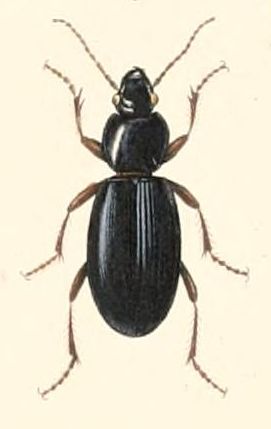
Blennidus is a genus in the beetle family Carabidae. There are more than 120 described species in Blennidus, found in South America.
Feroniola is a genus in the beetle family Carabidae. There are about 10 described species in Feroniola, found in South America.
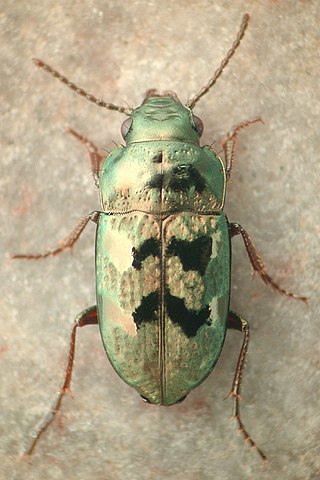
Systolosoma breve is a species of beetle in the genus Systolosoma. They have been found in Argentina and Chile.
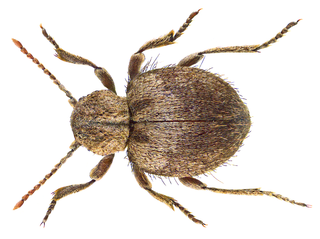
Trigonogenius is a genus of spider beetles in the family Ptinidae. There are five or six described species in Trigonogenius.

Migadopini is a tribe of ground beetles in the family Carabidae. There are about 16 genera and more than 40 described species in Migadopini.








